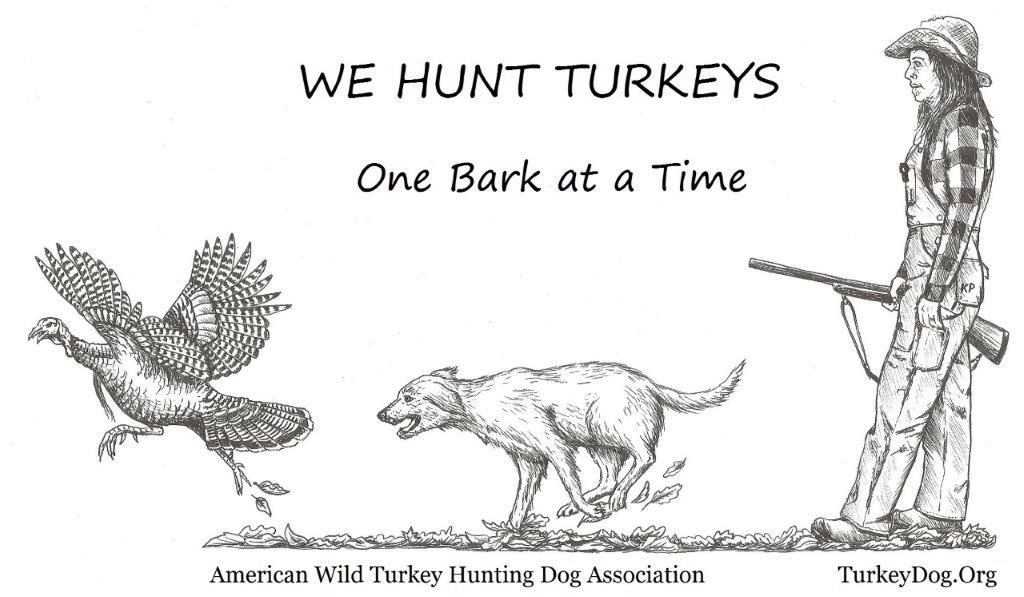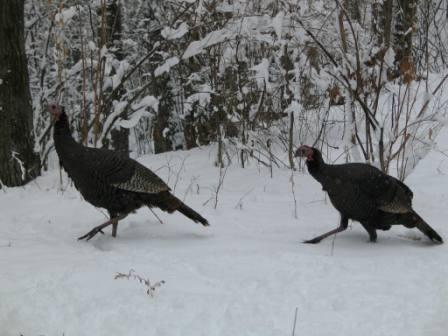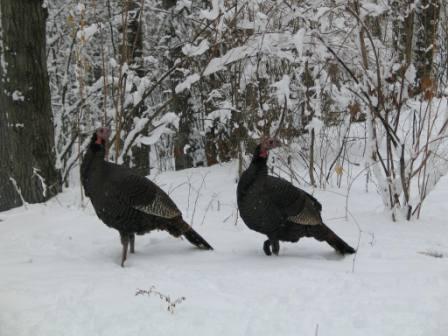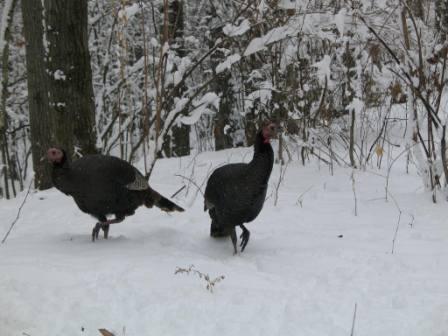|
Trained dogs eliminate crippling
losses. On average, 1 of 7 turkeys are wounded every
Spring and not recovered. That's 160,000 turkeys (2006 numbers)
nationwide (mostly gobblers), that'd be recovered, if the hunter had
the aid of their dog. These states Montana, Nebraska,
Utah,
Tennessee
and the provinces of British
Columbia, Alberta,
Quebec and Ontario
set a good example by allowing turkey hunters the use of their dog in
the Spring. In those places, dogs prevent lost cripples in both the
Fall AND in the Spring - the way it should be everywhere!
*
"9% of the hunters responding to the survey
(WI-DNR
p.37) believed they hit a bird they were unable to retrieve in spring.
By comparison, 16% of the hunters reported they hit a bird they were
unable to retrieve in fall." This means on
average, 1 out of 8 turkeys are wounded and not recovered! In
just Wisconsin, for example, this amounts to approximately 6100 turkeys
shot and not recovered in (2006 Spring harvest 46,662. Fall harvest
11,926 math).
Virtually all of these would have been recovered, if the hunter had the
assistance of a dog. Do we need any more reason to hunt
turkey with a dog?! "We did a study on turkey hunting in Florida in the 1970's (Studies of the Wild Turkey in Florida - 1988 technical bulletin). In one part of the study, we radio-tagged 35 gobblers to measure hunter success and crippling losses on a public hunting area. 12 were shot and retrieved, 3 were shot and killed but not retrieved (found by radio signal), that equals 15 total killed. Therefore, 3 out of 15 equals 20% of the total kill was lost unretrieved. Or to put it another way, the unretrieved gobblers equalled 25% of the killed and retrieved total (3/12). Incidentally, 3 of the 35 turkeys disappeared during the open season. By "disappeared" I mean that we never heard from them again. Either the radio transmitters failed or hunters killed them. If the radios failed, some or all could have been shot and lost. To have 3 of 35 radios fail during a 5-week-long period would be a little higher than expected, and I suspect that one or more may have had the radio knocked out by being shot. It is confusing, but the one thing that can be said with certainty is that 20% of the total kill was lost unretrieved. I am sure that turkey dogs would have reduced or possibly even eliminated the crippling losses." Lovett Williams *
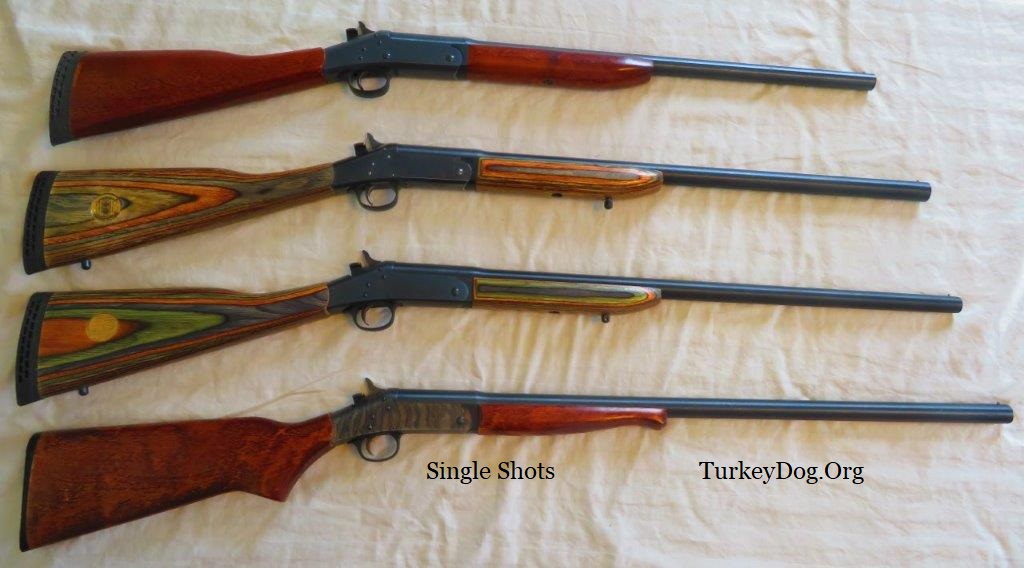 So in the Florida
study, 35 turkeys were tagged, 18 were shot, 15 were killed, 12 were
shot and retrieved, 3 were crippled/lost, and 3 'disappeared' (not
counted). Whether it's 12.5% in one study (1 out of 8 in WI) or 20% in
another (1 out of 5 in FL), that's a lot of birds. For estimating
purposes, let's average it at 16%.
Take any States known harvest and multiply it times .16 to estimate the
number of birds killed, but not recovered, because the hunters lacked
the aid of a dog. With an annual nationwide harvest of about 1 million
birds in 2006 X .16 that equals roughly 160,000 birds, and the majority
of them were gobblers. The time to change the rules is
past due, dogs should be able to accompany hunters. Even untrained dogs
kept on a leash until needed to retrieve a wounded bird would save
thousands of birds a year from being lost. Undoubtedly, the best companion a
turkey hunter can have is a well-trained dog. In most
cases, an untrained
dog would be more of a hindrance than a help. You wouldn't want a dog
with you when you're calling the bird in, unless it is trained to know
its part. But a dog trained
to lie still while the bird is called in would be
invaluable, and save one out of every 6 or 7 birds. So in the Florida
study, 35 turkeys were tagged, 18 were shot, 15 were killed, 12 were
shot and retrieved, 3 were crippled/lost, and 3 'disappeared' (not
counted). Whether it's 12.5% in one study (1 out of 8 in WI) or 20% in
another (1 out of 5 in FL), that's a lot of birds. For estimating
purposes, let's average it at 16%.
Take any States known harvest and multiply it times .16 to estimate the
number of birds killed, but not recovered, because the hunters lacked
the aid of a dog. With an annual nationwide harvest of about 1 million
birds in 2006 X .16 that equals roughly 160,000 birds, and the majority
of them were gobblers. The time to change the rules is
past due, dogs should be able to accompany hunters. Even untrained dogs
kept on a leash until needed to retrieve a wounded bird would save
thousands of birds a year from being lost. Undoubtedly, the best companion a
turkey hunter can have is a well-trained dog. In most
cases, an untrained
dog would be more of a hindrance than a help. You wouldn't want a dog
with you when you're calling the bird in, unless it is trained to know
its part. But a dog trained
to lie still while the bird is called in would be
invaluable, and save one out of every 6 or 7 birds.*
Excerpted from The Wild Turkey and Its Hunting by Edward A. McIlhenny. Available from Real Turkeys. 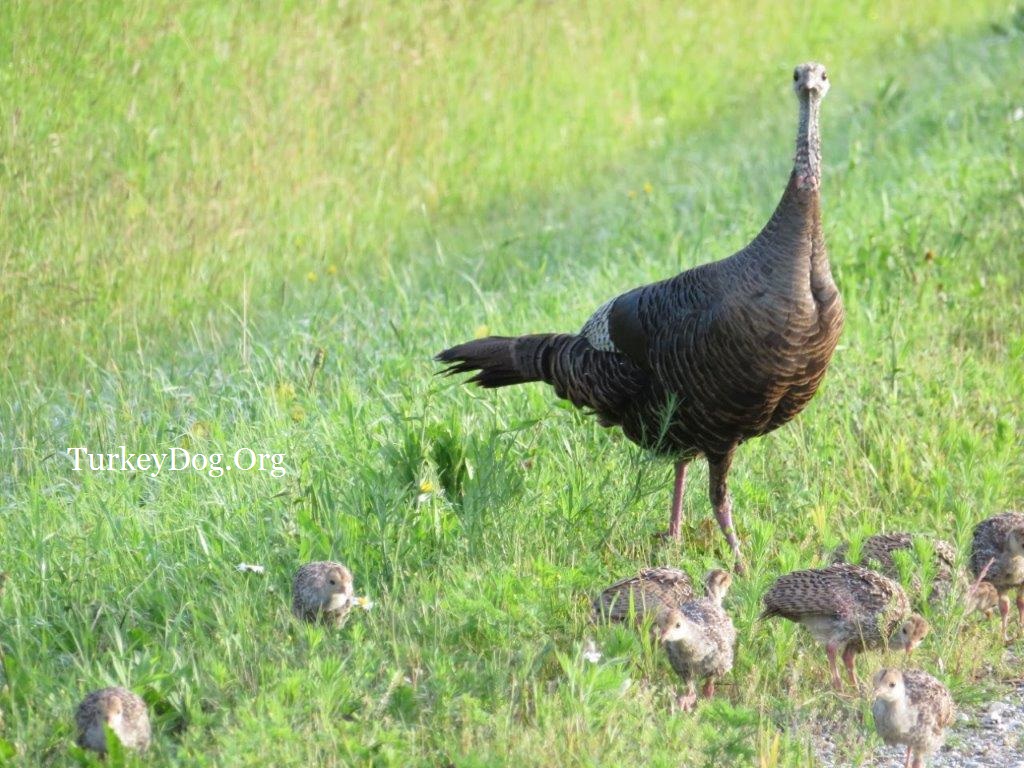 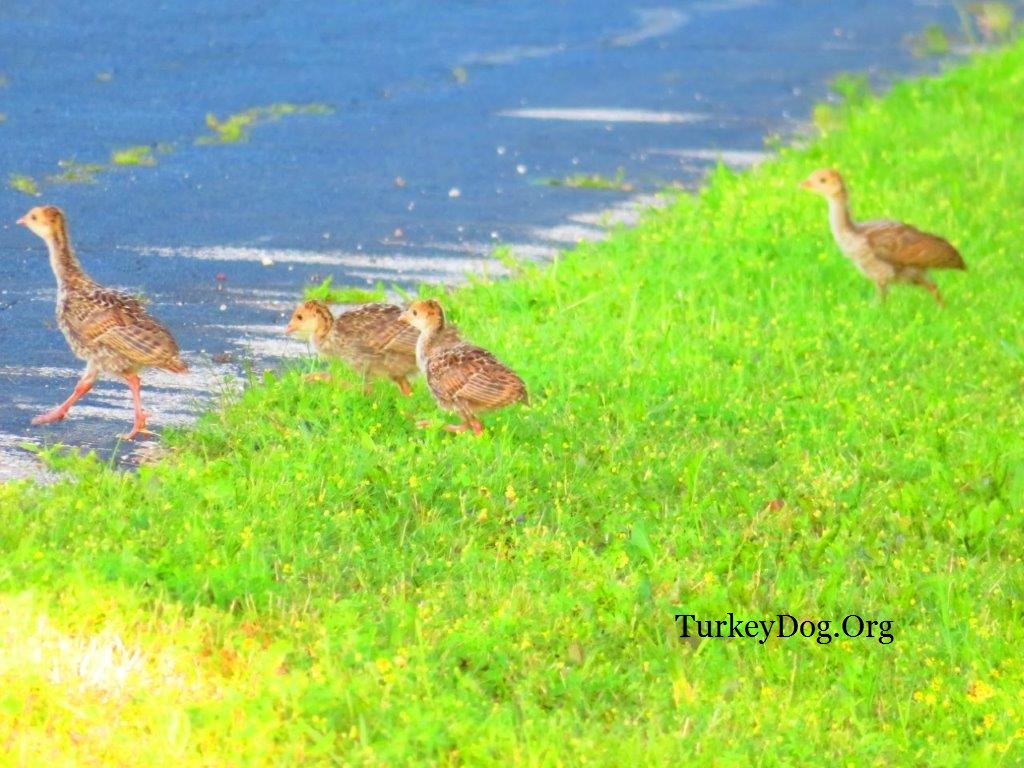 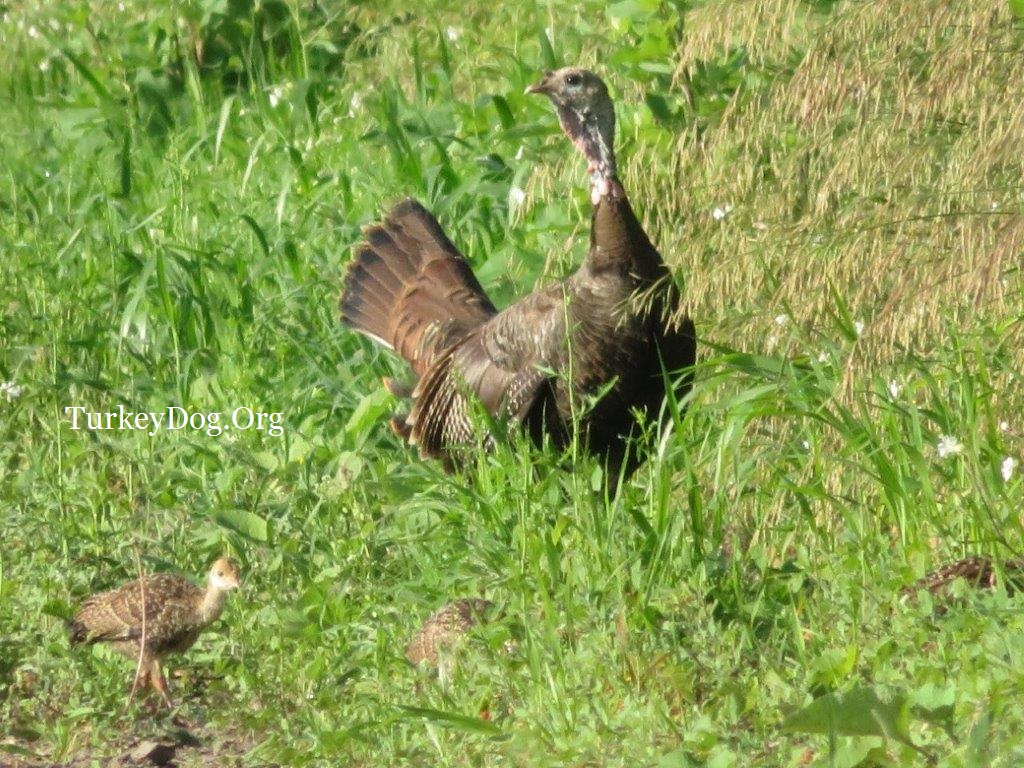 |
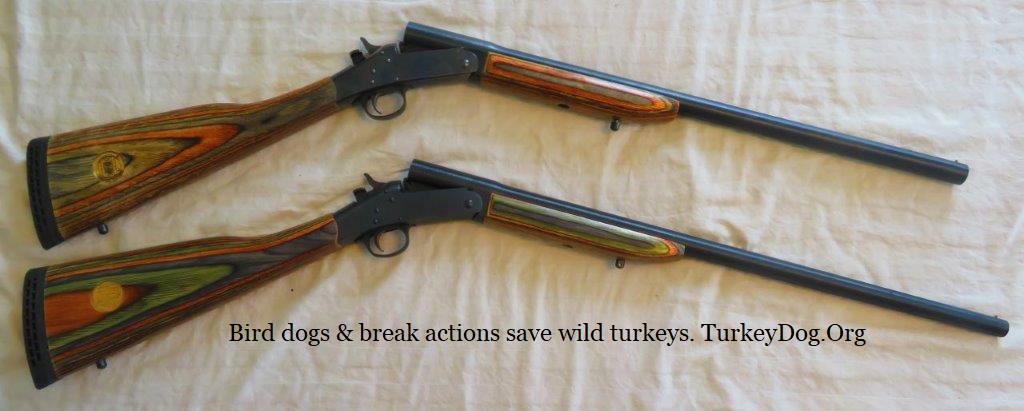
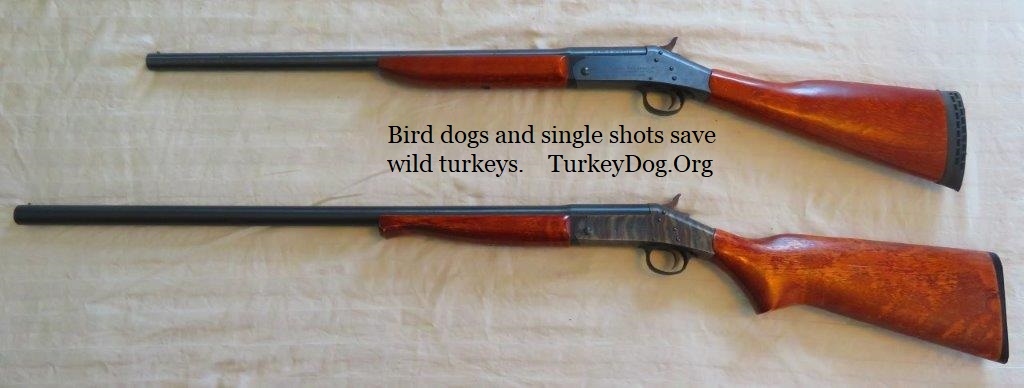 The best tool
we have to conserve the wild turkey is hunting them in the fall with a
well trained bird dog. Try it some time. First of all, the turkeys will
get away and tire the dog out... then try to call them back when they
just had the daylights scared out of them (it's not like calling
love-sick spring gobblers)! The
second best tool
is the single shot gun. When you have to make that one shot
count,
it's widely accepted less game is wounded or crippled with a break-open
or single action shotgun, than with
multiple shot pump actions and semi-autos. Lighter to carry, safer
handling and less expensive too. It takes lots of practice, to
call them in close enough for open sights, with your dog by your
side. The best tool
we have to conserve the wild turkey is hunting them in the fall with a
well trained bird dog. Try it some time. First of all, the turkeys will
get away and tire the dog out... then try to call them back when they
just had the daylights scared out of them (it's not like calling
love-sick spring gobblers)! The
second best tool
is the single shot gun. When you have to make that one shot
count,
it's widely accepted less game is wounded or crippled with a break-open
or single action shotgun, than with
multiple shot pump actions and semi-autos. Lighter to carry, safer
handling and less expensive too. It takes lots of practice, to
call them in close enough for open sights, with your dog by your
side. |
| Q1:
"It's not yet allowed in my State (AL,
AZ, FL, IL, IN,
MA,
MN, MO,
MS, NM,
OK,
RI,
SD,
WA) to hunt
turkeys with dogs in the fall season. But often when my dog and I are
small game hunting for rabbit, squirrel, grouse, pheasant, or woodcock,
she flushes turkeys in the classic way that you describe. Even though I
have the turkey license, stamp and permit, and the right choke and load
for my shotgun, it's not allowed, so what should I do?" A1: It sounds like you have the makings of the perfect turkey dog. But since it's not yet allowed in your State, we recommend you do two things: #1, contact your local sportsman clubs and those who administer the hunting rules and regulations, and ask them how you can work to get it changed. And #2, teach your dog that it's not allowed using the following training method: If you got a good scatter, build a blind from native materials. Make the dog sit in the blind with your friend so they can watch for squirrels while they wait at least 50 yards behind you. If the turkeys return, shoot one, and now you can show the dog what she should never do. Tell her, "bad dog, now look what you've done, you went and got that turkey killed." That one time should teach her, but if it doesn't, go out with your friend who has their turkey permit, and if your dog scatters more turkeys, you'll have the perfect opportunity for more training, but this time you hold the dog and he does the shooting. Repeat as necessary until eventually either your dog understands, or they correct the rules, and you'll be able to hunt without a problem. ...............................
Every DNR wildlife
biologist we talk to has no problem with fall turkey
hunters using dogs. Hunters with valid turkey permits that enjoy
hunting with their dog are most welcome to do so, it's fine with them.
If you have a valid permit, what would it matter, if you use a trained
giraffe to knock a turkey out of a tree? The illogical technicality is
unenforced. So, until the rule gets changed in your state, enjoy
squirrel hunting with your turkey dog. Or your turkey
giraffe!
...............................
As wildlife biologist
Jim Evrard wrote in the Wisconsin
Outdoor News print edition March 10, 2006: "In my opinion, there are people
who simply oppose the use of turkey hunting dogs because it represents
change. I heard the same opposition against extending
turkey hunting to the afternoon and to most changes in turkey hunting
regulations. Like the crow and dove season, I believe fall turkey
hunting with dogs will be a non-issue, since few hunters will
participate and no damage will be done to the wildlife resource."
|
| Q2:
"I heard that turkey hunters using dogs shoot at flushing turkeys in
the fall and wound them. I don't know about shooting at flying turkeys,
what do you think?" A2: It's no different than shooting flying geese or ducks, or woodcock taking off through the alders. You don't need a dog to shoot a flying turkey, anyone can shoot flushing turkeys now. It's an individual decision, and your training will tell you whether to shoot or not. Flushing turkeys are most vunerable when their wings are open, but you don't want a breast full of shot. How hard they are to kill depends on several factors. Turkeys will sometimes hold tight, and you can kill them when they flush with a headshot at close range with #6's and a modified choke. If they flush upwind their escape is slow, and offer a |
| Q3:
"I want to train my dog for turkey, but some people say using dogs to
hunt turkeys is an unfair advantage. Is that true?" A3: While we might actually consider them a handicap until properly trained, using dogs to hunt turkey is no different than hunting quail, duck, goose, partridge, dove, pheasant, grouse, or woodcock. Training your bird-dog guarantees to improve every day afield. And eventually a good bird dog will train you how to hunt turkey. In Missouri hunters train their mule to hunt turkey with. If they can run a mule through the woods chasing turkeys without getting themselves killed, good for them. The same goes for dogs. If you can train your dog to hunt turkey (and not deer, squirrel, or any of the other distractions) you've done good! Read the Llewellins for a better explanation. |
| Q4:
"Some archer friends say turkey dogs will ruin their deer hunting. Is
that true?" A4: Turkey dogs don't chase deer. And hunters with a permit to bag one turkey with their dog isn't a concern for bowhunters. Right now hunters with dogs can harvest many grouse, pheasant or woodcock, but a turkey hunter can usually only harvest one bird. We want it as quiet in the woods as everyone else. Honest sportsman don't deny others the enjoyment of their sport. We're taught from young on, if someone else is hunting there, don't go near and ruin it for them. We've all been taught to respect and support other hunters, don’t interfere with other hunters experiences, and support everyone’s right to hunt. **************************
"There are already folks who have reason to be in the woods with dogs
at that time of year. Archers have several weeks of hunting opportunity
and the chances of an individual archer being disturbed by this are
minimal. Archers hunting public land have the greatest chance for
disturbance; but allowing turkey dogs would not significantly affect
their already greater chances of hunt disturbance. Besides, activity in
the woods may keep deer moving. All of us would like to have the woods
to ourselves, but that does not give any group the right or reason to
exclude another. I think any issue raised by archers will be perceived
as an eliteist viewpoint. I like to bowhunt, though I would not
classify myself as a rabid archer. As a moderate archer, I cannot
justify excluding turkey hunters with dogs.I cannot tell you how many times I have eased up on rutting deer close enough to kill with an arrow while fall turkey hunting. Those animals were undisturbed by my presence as were any nearby archers. Sure, dogs cover alot more ground, but turkey dog trainers are going to be careful to discourage deer scenting and chasing, believe me." Bob Eriksen, NWTF Regional
Biologist 2/10/2006
**************************
Deadeye
says: "A turkey dog is going to hunt with his master, just like a bird,
grouse, or squirrel dog does. There is no more or less disturbance to a
bow hunter if any of these hunters walked through the same woods they
were bow hunting in, with or without the dog." |
| Q5:
"The turkeys around here used to be real vocal, but since I heard dogs
running in the woods, it seems the turkeys are silent." A5: Turkey dogs hunt silently until they break the flock. Those stories originate from the South, where deer hunting with dogs is allowed (see Virginia county map where deer hunting with a dog is allowed). Deadeye: "I just remembered from a turkey workshop I attended a few years back (in VA) that the number one complaint from spring turkey hunters was running dogs. They could be deer hounds or wild dogs. Evidently people take for granted that a turkey dog is a running dog instead of a flushing dog. Thus all the misconceptions." |
|
There's a few other misconceptions about turkey hunting with dogs. Some
people even picture dogs baying at lions or bears. They have the game
surrounded, until the dogs move in for the kill. That's a ridiculous
thought. A fairer comparison would be the upland bird dog that dearly
loves the birds they pursue. Deadeye Barham
explains it very well on Magnum's
page, and also on Zeke's
page. |
A6: You're on the right track. While it can take longer to kill a turkey than a pheasant, the main point is you're out in the field with your dog. Your dog just wants to spend time with you. A bird dog is happy hunting squirrels, if that's what you show you're interested in. Your figuring is correct, while your expenses will be much less, you'll be spending more time afield. Your dog will surprise you with their understanding of what technique to use on which bird, once you show them how it works. The only reason they don't, is an owner telling the dog to not bark, or to not flush those big birds. Once they realize it's okay to scatter the turkeys and you're able to call one in and shoot it, your dog will 'get it' and the learning curve goes up in direct proportion to the number of times you get out. While turkey hunting with a dog is a little different than pheasant or grouse hunting with a dog, it's all enjoyable and rewarding for you and your dog. You'll hunt more, with less expense. And don't worry about ruining the dog for other upland birds, that is so innate in their genetics, the next time they encounter a pheasant or grouse, be ready. Walk with #6 - modified choke in your gun. When you sit down to call turkeys in, switch the choke to full or extra-full. Join the club - the book has many other tips on how to train your bird dog for hunting fall turkey. |
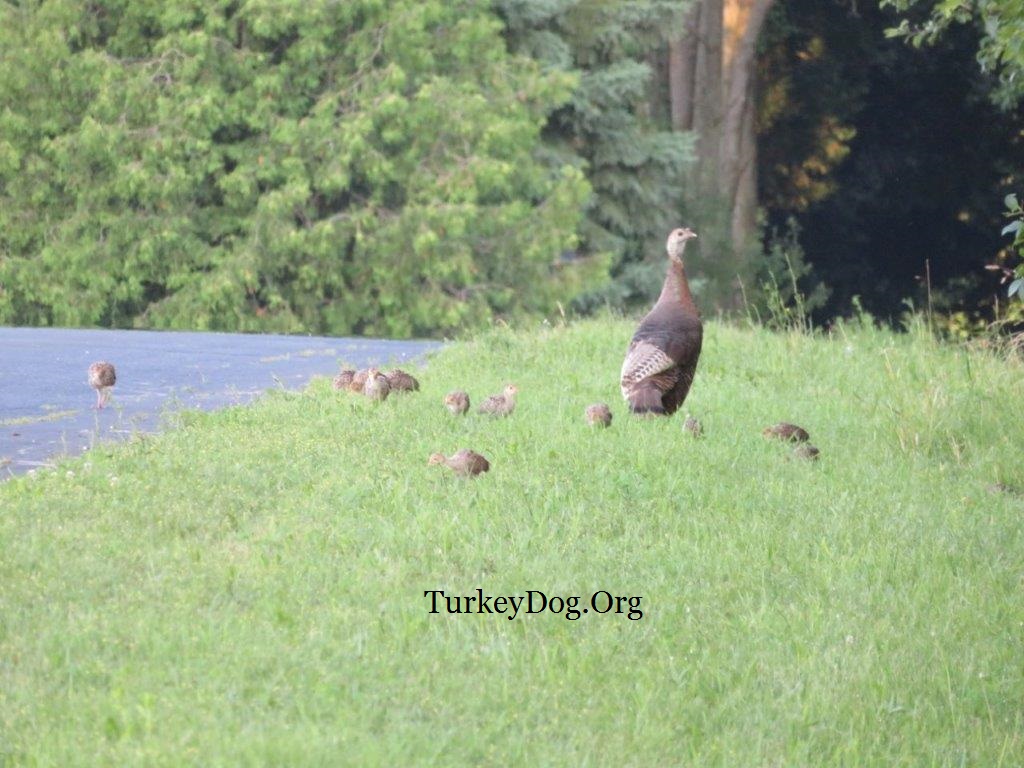  Up
until the late 1980's, we thought dogs could only see in black and
white. Then studies revealed that dogs do see in color, just a little
less of the spectrum than humans do. Green, yellow, and orange all look
alike to dogs. Blue-green looks white. "Dogs see black, white, gray,
yellow, and blue. So it's not as colorful a world for them, but it is
not color-less, either. The word 'colorblind' is bad, it really should
be 'color limited'." Dana
K. Vaughan, Ph.D. Associate Professor of Biology, U-W Oshkosh Up
until the late 1980's, we thought dogs could only see in black and
white. Then studies revealed that dogs do see in color, just a little
less of the spectrum than humans do. Green, yellow, and orange all look
alike to dogs. Blue-green looks white. "Dogs see black, white, gray,
yellow, and blue. So it's not as colorful a world for them, but it is
not color-less, either. The word 'colorblind' is bad, it really should
be 'color limited'." Dana
K. Vaughan, Ph.D. Associate Professor of Biology, U-W Oshkosh
---
"Any
woman who does not thoroughly enjoy tramping across the country on a
clear frosty morning with
a good gun and a pair of dogs does not know how to enjoy life." Annie Oakley |
|
Home | About Us
|
Books |
Breeds
| Classifieds
| FAQ
|
History
| Kit
Shaffer
Legislation | Links | Scratchings | Spring | Stories | Tales | Shop in the Store Members are invited to send pictures of yourself and your dog, with a short story like these: Carson Quarles | Earl Sechrist | Frederick Payne 1 | Frederick Payne 2 | Gary Perlstein | Gratten Hepler | Jon Freis 1 | Jon Freis 2 | Larry Case | Marlin Watkins 1 | Marlin Watkins 2 | Mike Joyner | Mike Morrell | Parker Whedon | Randy Carter | Ron Meek 1 | Ron Meek 2 | Tom McMurray | Tommy Barham 1 | Tommy Barham 2 Members Only: Hall of Fame | Members | Museum | Studies | and the States KY | NC | NY | OH | ON | PA | TN | VA | WI | WV © 2004 - 2024 American Wild Turkey Hunting Dog Association All Rights Reserved Permission to copy without written authorization is expressly denied. Send us an email |
